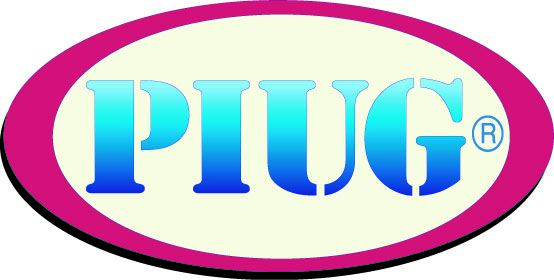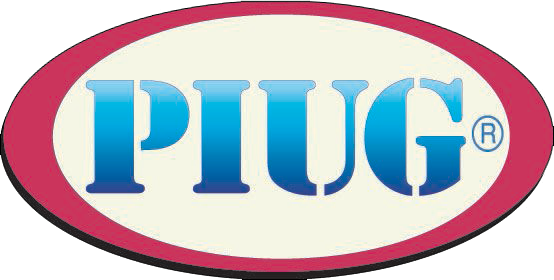Note: This posting includes information about two forthcoming events with presentations related to Artificial Intelligence (Aug. 11, 2020 and Aug. 13, 2020), two recent recorded past meetings (July 30, 2020 and May 7, 2020) with related contents; links to background USPTO documents/presentations (2018-2019), and a list of USPTO staff conference presentations on in-house development of patent and trademark search systems utilizing AI algorithms.
USPTO holds two online events with presentations related to Artificial Intelligence:
1. Technical Center TC2800 2020 Customer Partnership Meeting: (Aug.11, 2020)
From the Agenda:
Artificial Intelligence for Patents [Artificial Intelligence Tools at the USPTO]: 12:50 pm-1:00 pm ET
A registration link [A registration deadline Aug.7, 2020 has passed, but see below Mr. Matt Such presentations on forthcoming Aug. 13, 2020 PPAG Meeting and at two other recorded events (July 31, 2020 and May 7, 2020)
Source: An agenda of 2020 TC 2800 CPM Meeting and details in a Eventbrite registration page
2. Patent Public Advisory Committee (PPAC) Q3 meeting (Aug.13, 2020)
From Agenda:
2-2:20 p.m. Artificial Intelligence (AI)
- Developments in AI patent policy
- Update on AI technologies at the USPTO
Presenters:
- PPAC AI Subcommittee Co-Chairs Jeremiah Chan | Bernard Cassidy
- Deputy Under Secretary of Commerce for Intellectual Property and Deputy Director of the USPTO Laura Peter
- Senior Counsel to the Director, Office of the Under Secretary and Director Coke Stewart
- Director, TC 2800 Matt Such
Also of interest are other items of Agenda of the Aug.13, 2020 PPAC Meeting:
10:30-11 a.m. Opening remarks Under Secretary of Commerce for Intellectual Property and Director of the USPTO Andrei Iancu
11:00-12 PM … Update on quality initiatives: Search Immersion & Peer Search Collaboration Pilot updates (among other itemsO
1:45-2:00 IT update: Update on search rollout…
Access through webex link (no registration is required).
3. Presentation by Matt Such, USPTO Director, TC 2800 on AI for patent classification at the USPTO (at 1:08:39) at the recorded webinar : Webinar: A Conversation with the Commissioner – A Look Inside Patent Processes at the USPTO (IPWatchdog, July 30, 2020)
4. See also materials/recording of the previous PPAC Meeting
PPAC May 7, 2020 Quarterly Meeting
1:05-1:25 Artificial Intelligence (AI) ( Meeting recording, 1:51:23-2:11:15)
• AI for enhanced search [Artificial intelligence for patents] (4 p.) (Recording, 1:51:29-2:00:40)
• CPC auto-classification
• Requests for comments/AI landing page [Artificial Intelligence Policy] (13 p.) (Recording, 2:00:40-2:07:30)
Speakers:
PPAC AI Subcommittee Co-Chairs Bernard Cassidy | Jeremiah Chan
Director, TC 2800 Matt Such
Senior Policy Advisor and Acting Chief of Staff, Office of the Under Secretary and Director Coke Stewart
Transcript of the Meeting (p.94-101)
Note: Below are links for some documents/recording discussing USPTO use AI in patent examination.
USPTO 2018-2022 Strategic Plan, See Objective 3B at p.6
USPTO. Emerging Technologies in USPTO Business Solutions May, 25 2018, 23 p. (Presentation on WIPO Meeting of Intellectual Property Offices (IPOs) on ICT Strategies and Artificial Intelligence (AI) for IP Administration, May 23 to May 25, 2018 (Geneva, Switzerland) [Early USPTO work is summarized in WIPO Index of AI initiatives in IP offices]
“USPTO’s Challenge to Improve Patent Search With Artificial Intelligence. Request for Information. Notice ID RFI-USPTO-AI-PATENT-SEACH-18,” September 13, 2018.. See Appendix 1 at p. 3-5 [According to Director Iancu's presentation at Jan. 31 2019 Conference (below) USPTO have receive 60 responses for this ROI]
Director Iancu. Remarks. Conference:Artificial Intelligence: Intellectual Property Policy Considerations (January 31, 2019, USPTO Headquarters, Alexandria, VA) (Paragraphs 9-12). Video recording of Opening Remarks (6:06-9:28)
Director of the U.S. Patent and Trademark Office, Andrei Iancu. Remarks delivered at the International Conference on AI-Emerging Technologies and IP. July 16, 2019, Tel Aviv, Israel
Artificial Intelligence is also impacting the way we work in government IP offices, including at the USPTO. Specifically, our respective offices are utilizing the advances in AI to help our examiners as they review the applications coming in. At the USPTO, for example, integrating AI to augment classification and search is a very high priority in the agency. Over the past year we have explored using AI for search expansion and refinement, assist with patent classification tools, and locating similar images. The most promising of these AI capabilities have already been identified and are being prioritized for inclusion into our search system in order to pilot with examiners.
Last March marked the USPTO’s first production deployment of a public-facing product that uses AI for data extraction to unlock a legacy data set called “Enriched Citations.” Using AI techniques we were able to leapfrog our legacy systems to harmonize USPTO Office Action data to that of other International Offices from several years to delivery, to a couple of months. Using these same techniques, we just released Office Action and Patent Trial and Appeal Board (PTAB) data sets, to provide the public with greater insight into the patent evaluation process by allowing users to quickly view information about prior art cited in specific patent application office actions.
https://www.uspto.gov/about-us/news-updates/remarks-director-iancu-international-conference-ai-emerging-technologies-and
A presentation of the USPTO representative at Sharing session on the use of artificial intelligence for examination of patent applications. WIPO SCP31. Standing Committee on the Law of Patents. Agenda Item 6, See videorecoding at 2:16:42-2:19-22 (Dec. 3, 2019 AM Session)
USPTO Artificial Intelligence Portal (launched April 2020)
USPTO Staff research publications on development of in-house patent and trademark search systems utilizing AI algorithms (2016-2020)
1. Krishna, Arthi, Ye Jin, Christine Foster, Greg Gabel, Britt Hanley, and Abdou Youssef (USPTO). “Query Expansion for Patent Searching Using Word Embedding and Professional Crowdsourcing.” ArXiv:1911.11069 [Cs], November 14, 2019. http://arxiv.org/abs/1911.11069. (Presented at AAAI FSS-19: Artificial Intelligence in Government and Public Sector, Arlington, Virginia, USA)
... A critical part of keyword searching is query expansion, which is the process of including alternate terms such as synonyms and other related words, since the same concepts are often described differently in the literature. … By curating technology-specific corpora and training word embedding models based on these corpora, we are able to automatically identify the most relevant expansions of a given word or phrase. We compare the performance of several automated query expansion techniques against expert specified expansions. Furthermore, we explore a novel mechanism to extract related terms not just based on one input term but several terms in conjunction by computing their centroid and identifying the nearest neighbors to this centroid. Highly skilled patent examiners are often the best and most reliable source of identifying related terms. By designing a user interface that allows examiners to interact with the word embedding suggestions, we are able to use these interactions to power crowdsourced modes of related terms. Learning from users allows us to overcome several challenges such as identifying words that are bleeding edge and have not been published in the corpus yet. This paper studies the effectiveness of word embedding and crowdsourced models across 11 disparate technical areas. [See attached Krishna2019_Fig.3]
2. Showkatramani, Girish, Arthi Krishna, Ye Jin, Aaron Pepe, Naresh Nula, and Greg Gabel.[USPTO] “User Interface for Managing and Refining Related Patent Terms.” In HCI International 2018 – Posters’ Extended Abstracts, edited by Constantine Stephanidis, 115–20. Communications in Computer and Information Science. Cham: Springer International Publishing, 2018. https://doi.org/10.1007/978-3-319-92270-6_16.
In this study, we have developed a user interface (Fig. 1 ) that allows domain experts to quickly evaluate several word embedding models and curate a more sophisticated set of related patent terms by combining results from several models or in some cases even augmenting to them by hand. Our application thereby seeks to provide a functional and usable centralized interface towards searching and identifying related terms in the patent domain
3. Showkatramani, Girish, Sashi Nareddi, Chris Doninger, Greg Gabel, and Arthi Krishna. “Trademark Image Similarity Search.” In HCI International 2018 – Posters’ Extended Abstracts, edited by Constantine Stephanidis, 199–205. Communications in Computer and Information Science. Cham: Springer International Publishing, 2018. https://doi.org/10.1007/978-3-319-92270-6_27.
... In this study, we utilize CNN [Convolutional Network] to address the problem of searching trademarks similar to a chosen mark based on the image characteristics. A corpus of trademark images are pre-processed and then passed through a trained neural network to extract the image features. We then use these features to perform image search using the approximate nearest neighbor (ANN) variant of the nearest neighbor search (NNS) algorithm as depicted in Fig. 2. NNS is a form of proximity search that aims to find closest (or most similar) data points/items from a collection of data points/items.This system thereby seeks to provide an efficient image-based search alternate to the current keyword and category of design code combination of searching.
4. Krishna, Arthi M., Brian Feldman, Joseph Wolf, Greg Gabel, Scott Beliveau, and Thomas Beach. [USPTO] “User Interface for Customizing Patents Search: An Exploratory Study.” In HCI International 2016 – Posters’ Extended Abstracts, edited by Constantine Stephanidis, 264–69. Communications in Computer and Information Science. Cham: Springer International Publishing, 2016. https://doi.org/10.1007/978-3-319-40548-3_44.
…Several emerging techniques show promise to increase the accuracy of automated searching, including analysis of: named entity extraction, explanations of how patents are classified, relationships between references cited by the examiner, weighing words found in some sections of the patent application differently than others, and lastly using the examiners’ domain knowledge such as synonyms. … Our approach is firstly, to design a user interface that leverages the above-mentioned processing techniques for the user and secondly, to provide visual cues that can guide examiner to fine tune search algorithms. The user interface displays a number of controls that affect the behavior of the underlying search algorithm—a tag cloud of the top keywords used to retrieve patents, sliders for weights on the different sections of a patent application (e.g., abstract, claims, title or specification), and a list of synonyms and stop-words. Users are provided with visual icons that give quick indication of the quality of the results, such as whether the results share a feature with the patent-at-issue, such as both citing to the same reference or having a common classification. [See Krisna2016_Fig.1]
5.Krishna, Arthi, Brian Feldman, Joseph Wolf, Greg Gabel, Scott Beliveau, and Thomas Beach. “Examiner Assisted Automated Patents Search.” In 2016 AAAI Fall Symposium Series, 2016.(see an archived copy of a Google cache of the presentation; an original at aaai.org is currently unavailable)
… Our approach is to build a patent search algorithm which functions as a cognitive assistant to the patent searcher. Contrary to the approach of treating the search algorithm as a black box, all components of the search algorithm are explained, and these components expose controls that can be adjusted by the user. This level of transparency and interactivity of the algorithm not only enables the experts to get the best use of the tool, but also is crucial in gaining the trust of the users. In this paper we discuss the engineering of the cognitive assistant search tool, referred to as Sigma, and the various interactions it affords the users. The tool is currently being piloted to patent examiners in the unit 2427
Update 8/9/2020 2:44 AM Added: USPTO staff research publications on development of in-house patent and trademark search systems utilizing AI algorithms (2016-2020)
 Search
Search Community
Community Job Board
Job Board
